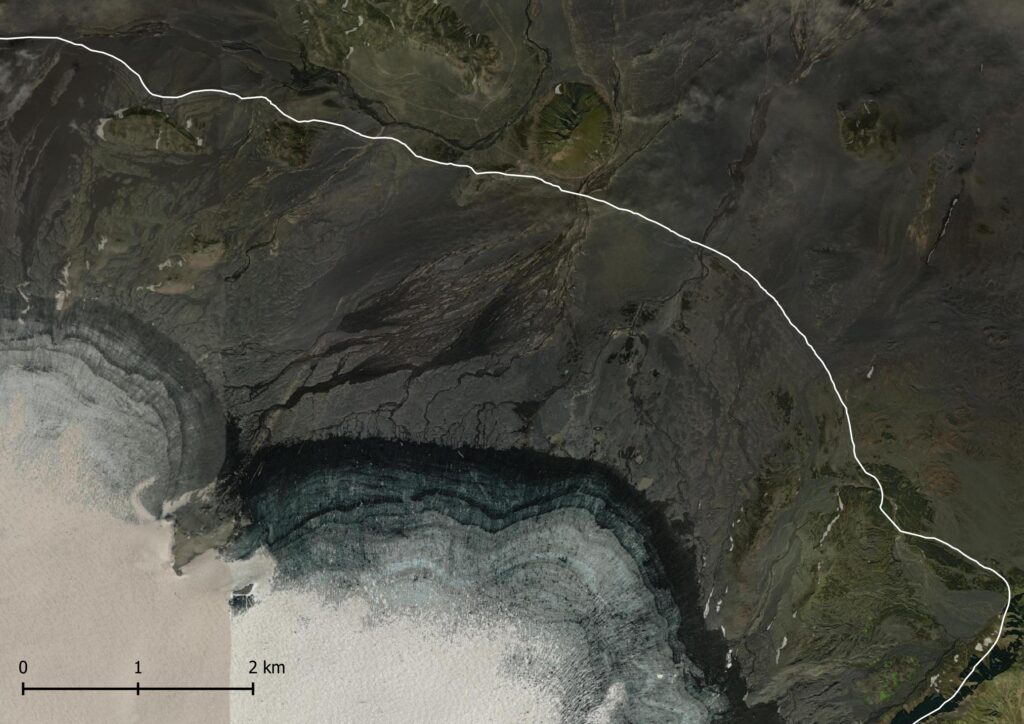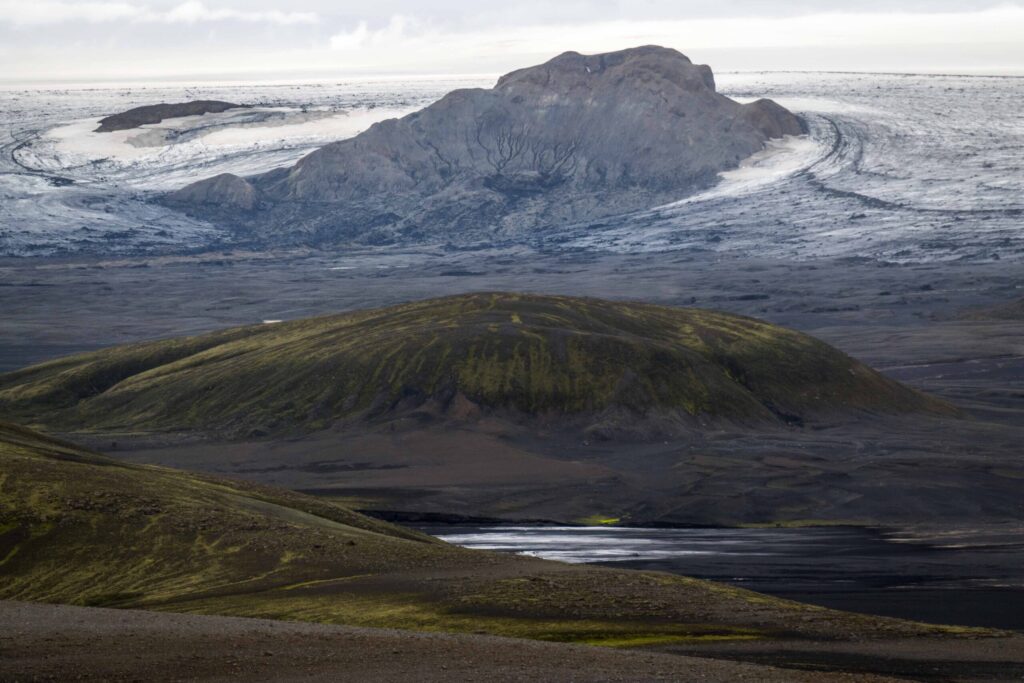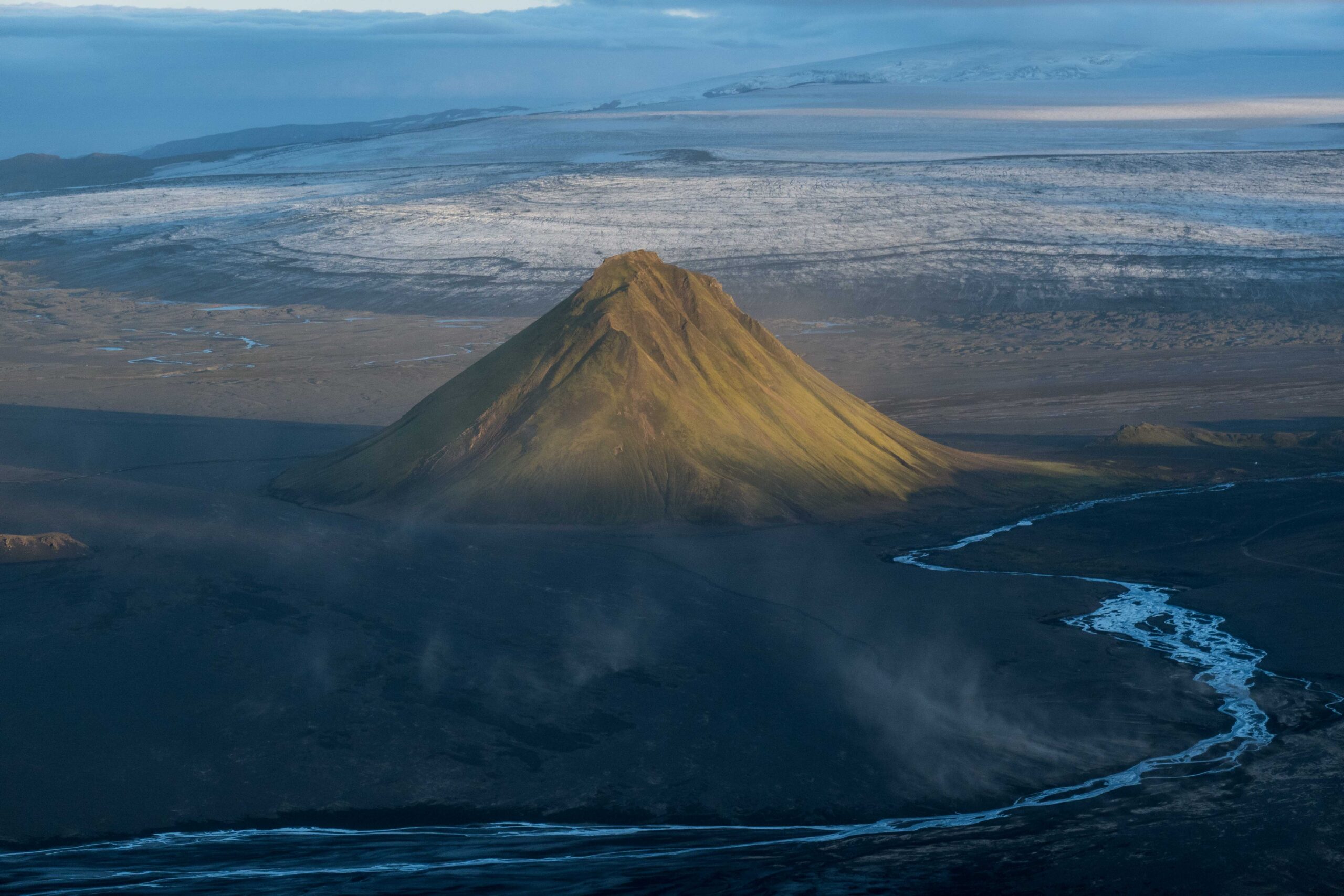Sléttjökull occupies the entire northern side Mýrdalsjökull. The very gently sloping glacier is over 20 km wide and terminates on a sandy outwash plain. Sléttjökull was also known as Mælifellsjökull, after the prominent mountain in front of the glacier.
Sléttjökull is a very slow glacier, moving at less than 20 m per year (Van der Meer et al., 1999). Halfway the width of the enormous glacier there is a small, nameless mountain that has appeared from the retreating ice over the last years. Likewise, there are similar single-standing hills in front of the glacier. They were all formed subglacially by volcanic eruptions, as the Eldgjá fissure runs underneath the ice cap.


Out of all mountains appearing from the receding ice, Mælifell is the most famous one. This 791 meter high (extinct) volcano has an iconic conical shape and rises 200 m meter above the surrounding landscape. Although the mountain was freed from the ice cap over ten thousand years ago, at the end of the last Ice Age, it is still only 2.5 km from the glacier’s margin. At the end of the nineteenth century Sléttjökull even reached all the way up to Mælifell. Since then the glacier retreated continuously, only interrupted by a stationary phase in the 1980’s.


The uncovered landscape slowly gets vegetated. So the further from the ice, the more time mosses and grasses have had to cover the bare ground. But not every patch of land gets successfully colonized by plants. Large areas are subject to flooding from Sléttjökull’s meltwater. Hundreds of square kilometers along the glacier are therefore barren sands, called Mælifellssandur. It never settles, as rivers constantly change course and fierce winds cause blinding sandstorms.
The Sléttjökull continues to retreat at a rate of 50-100 m annually, so in the coming decades more hills are likely to appear from the ice. Moreover, the wasting glacier will uncover glacial till, a form of unsorted sediment at the base of glaciers that is very susceptible to erosion. This guarantees sufficient supply of sediment. Together with abundant meltwater, Mælifellssandur and Sléttjökull will keep being inhospitable places.

Search within glacierchange: